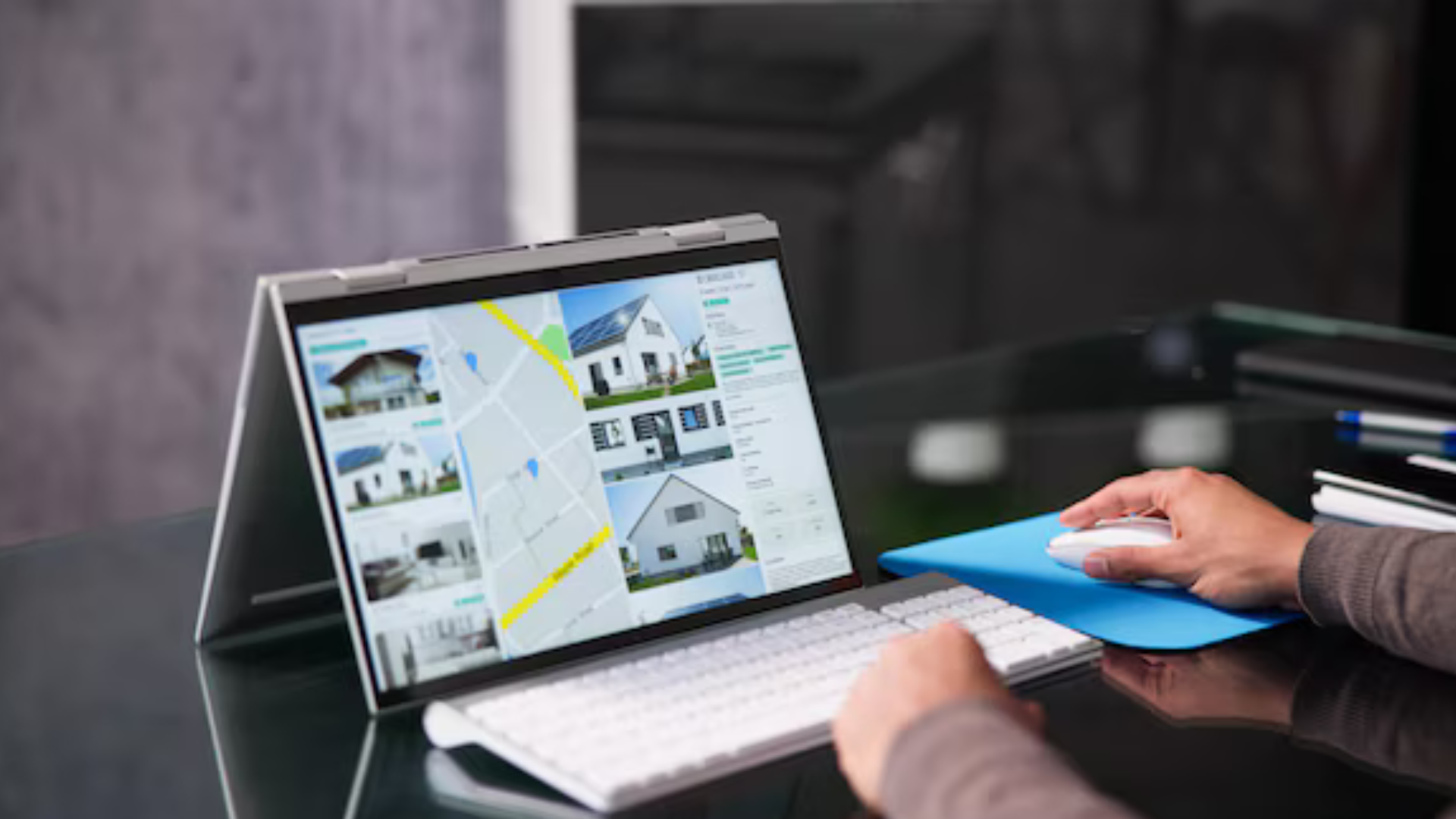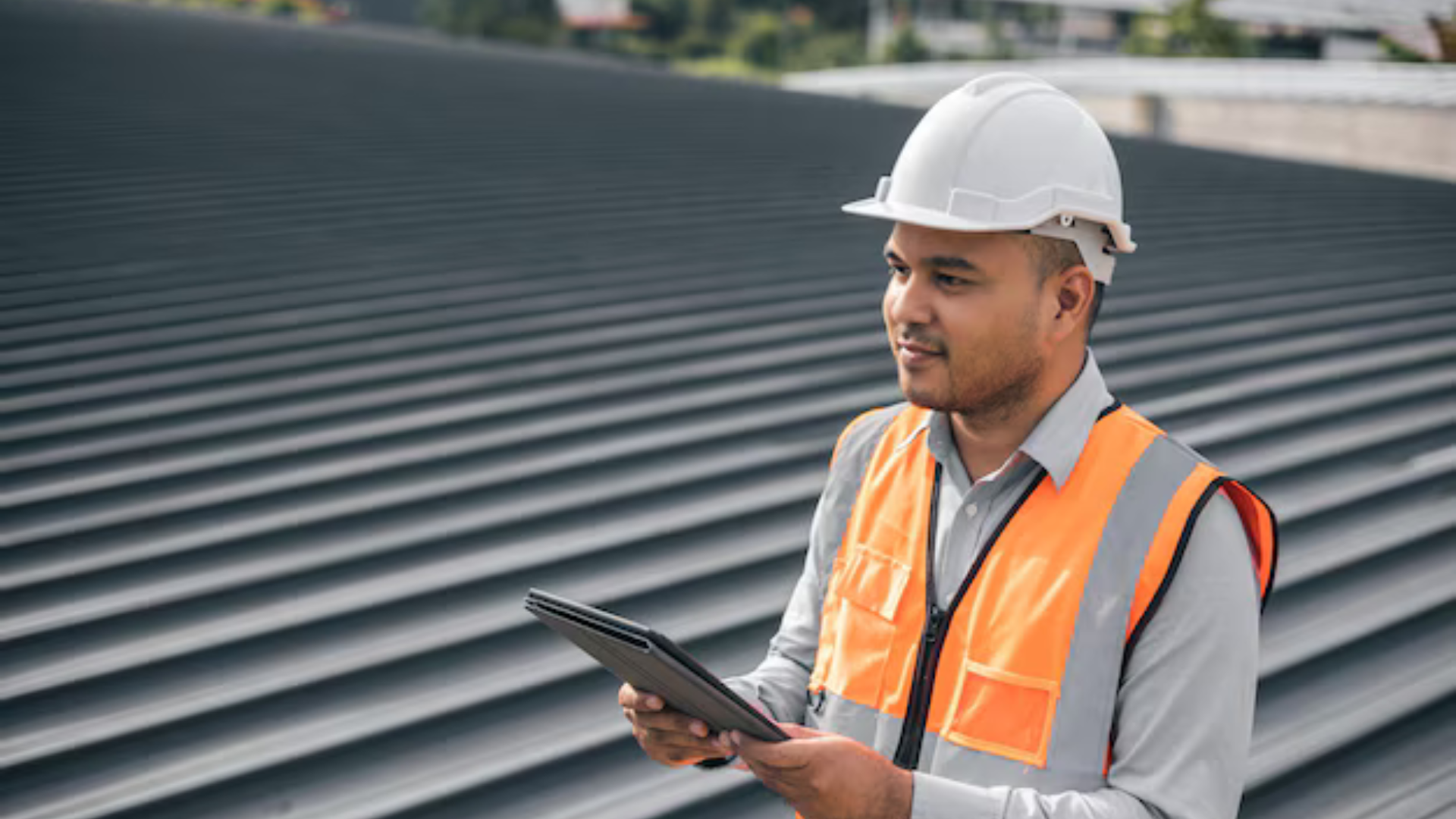April 7, 2025
The roofing industry is evolving, leading to continuous modifications in its integral processes. Roofing estimation is a crucial aspect of roofing businesses, and it is also undergoing significant changes to enhance precision.
Accurate estimates are the backbone of a successful roofing business. They build client confidence, prevent costly mistakes, and boost sales.
This blog will explore how advanced innovations are reshaping the roofing estimation process and maximizing profitability.
Key Insights
The following are the key takeaways from the blog:
- Roofing estimation is keeping up with the evolving trends of the industry and advancements in digital tools.
- Features like AI, cloud-based platforms, and automation are revolutionizing the roofing sector.
- RooferBase is emerging as a one-stop solution for modern roofing estimation.
Worth reading: How Roofing Contractors Can Streamline Operations with Software?
What Are The Key Aspects of Roofing Estimation?
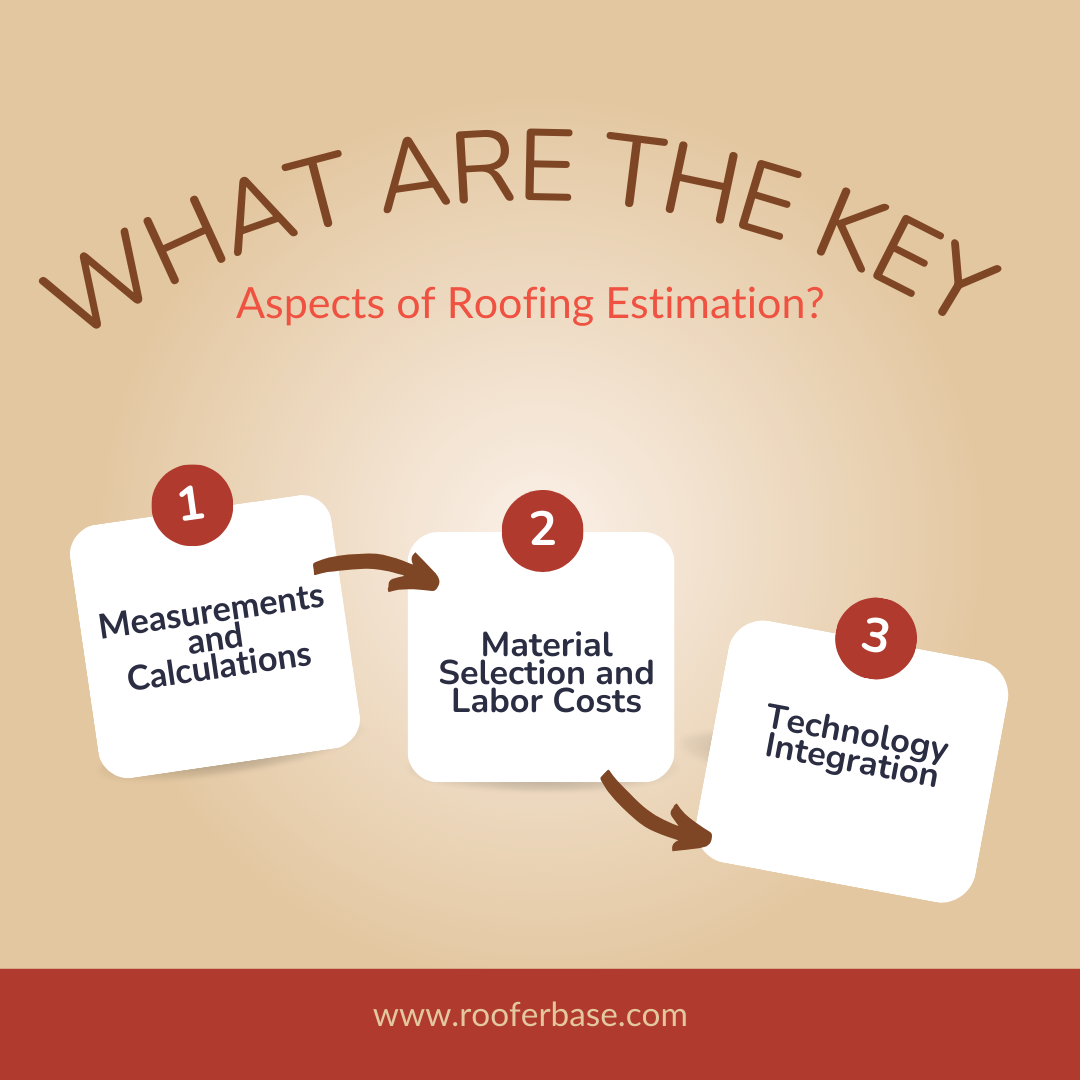
Take a look at the key aspects that influence the roofing estimation process:
1. Measurements and Calculations:
Accurate measurements are the foundation of any roofing estimate. It includes calculating the total area of the roof to determine material requirements. Also, considering the roof pitch or slope is crucial, as steeper roofs require more labor and safety.
2. Material Selection and Labor Costs:
A list of required materials, such as tiles, asphalt shingles, and metal, along with their pricing, is crucial in roofing estimation.
Nowadays, the demand for sustainable and durable roofing materials is increasing, and these tend to be more expensive than traditional options. Hence, with rising material costs, accurate estimation has become even more essential.
Labor estimates are also a significant factor. Their pricing is influenced by the complexity of the roof, the deadline for installation, and the necessary safety measures.
3. Technology Integration:
The integration of advanced digital solutions has made the roofing estimation process faster, more efficient, and more accurate.
Features like automated calculations, real-time data consideration, and integration with other software solutions like CRM or accounting platforms collectively streamline the workflow and improve customer experience.
The Biggest Challenges in Roofing Estimation Today

Here are the challenges associated with roofing estimation that need to be overcome for a smooth roofing estimation process:
Human Error & Inaccurate Measurements
Manual roof measurement methods can be tedious and error-prone. Errors in estimation can lead to issues such as material shortages or wastage, project delays, and financial losses.
Slow & Inefficient Quoting Process
Traditional quoting methods, which involve using papers or spreadsheets, can lead to mistakes and consume a significant amount of time, especially when dealing with complex roofs.
Inefficiency in generating quotes can frustrate customers and make a roofing firm less competitive in an era of fast-paced technology.
Competitive Market & Pricing Pressures
The roofing industry is expanding rapidly, resulting in cut-throat competition among roofing contractors. This compels firms to offer competitive pricing to win bids while making gains.
Helpful reading: The Most Common Inefficiencies in Roofing Businesses
The Next-Generation Trends & Innovations Shaping Roofing Estimation in 2025
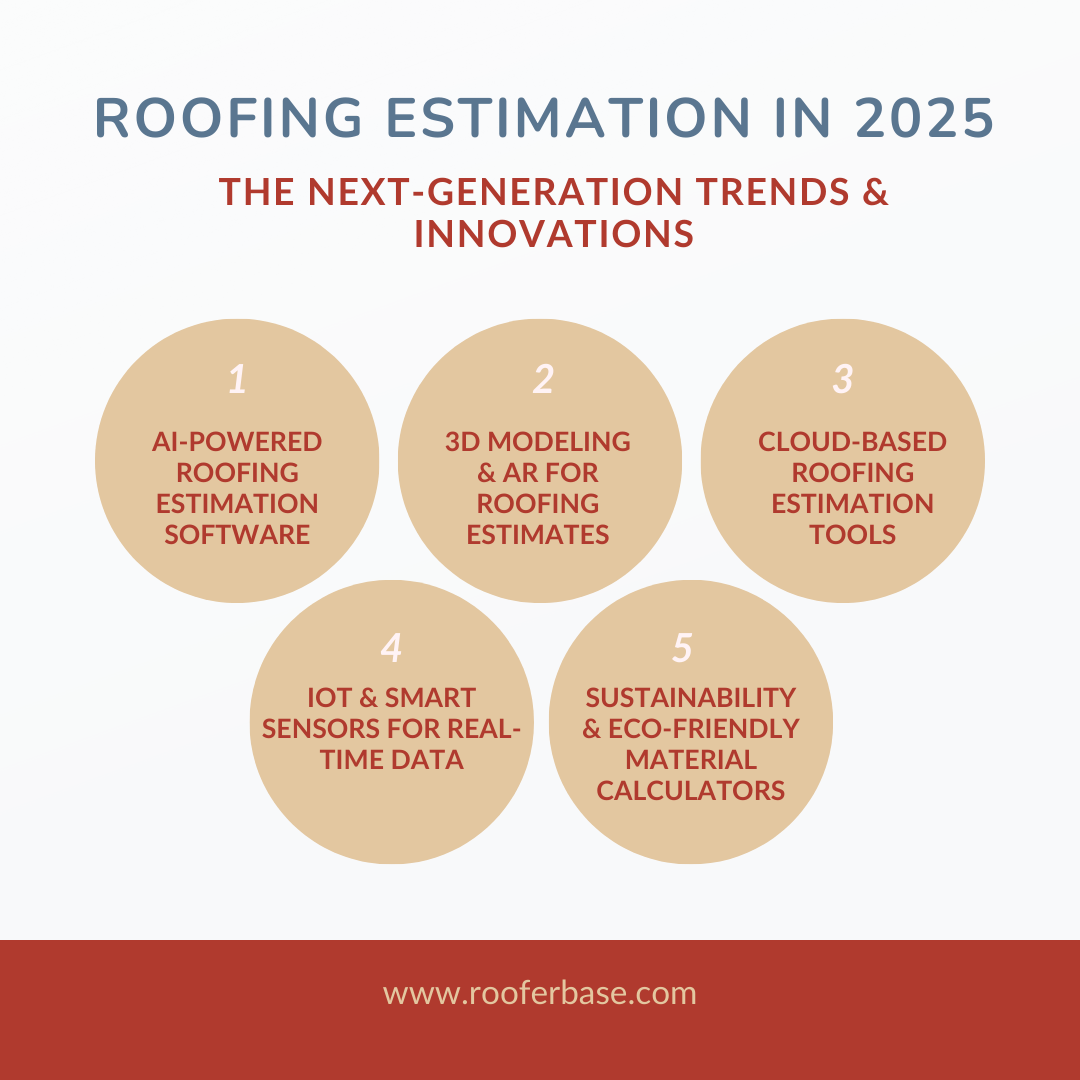
Here is a list of innovations that are transforming the roofing estimation method and techniques with their unique features:
1. AI-Powered Roofing Estimation Software
AI-powered roofing software is revolutionizing the roofing industry significantly. It uses aerial imagery captured through drones or satellites and leverages algorithms to calculate roof dimensions, slope, and other critical details. It eliminates manual errors, enhances accuracy, and improves the quality of work.
AI-driven automated material and cost estimation tools further streamline the estimation process by delivering precise calculations and improving transparency.
These tools calculate the exact quantity of materials required based on roof dimensions and integrate with real-time pricing data from suppliers to provide accurate cost estimates.
2. 3D Modeling & Augmented Reality (AR) for Roofing Estimates
With the help of Augmented Reality (AR) and 3D modeling technology, contractors enable homeowners to visualize roof designs before work begins.
Overlaying digital designs on actual buildings enhances customer satisfaction and reduces the likelihood of post-completion revisions.
This technology provides customers with a clear understanding of the final product, which in turn assists roofing contractors in fostering trust and ensuring client expectations are met.
3. Cloud-Based Roofing Estimation Tools
Cloud-based roofing estimation tools enhance the ease of managing roofing businesses. These tools allow the workforce to access project data from any location.
They also offer the flexibility for multiple users to work on the same project simultaneously. This improves communication and collaboration among team members.
4. IoT & Smart Sensors for Real-Time Data
The Internet of Things (IoT) and smart sensors collect data on elements that impact roof conditions, such as temperature, humidity, and wind.
This data helps detect potential issues like leaks or structural damage, facilitates predictive maintenance or roof replacement, and ensures safety beforehand.
5. Sustainability & Eco-Friendly Material Calculators
As environmental and climatic challenges intensify, the adoption and promotion of sustainable practices are also increasing. Therefore, eco-friendly roofing materials like recyclable shingles, solar tiles, and cool roof coatings are gaining popularity.
Material calculators allow consumers to select environmentally friendly materials and accurately estimate their quantities and prices.
Captivating read: The Role of Sustainability in Modern Roofing Practices
Why Rooferbase is the Future of Roofing Estimation?
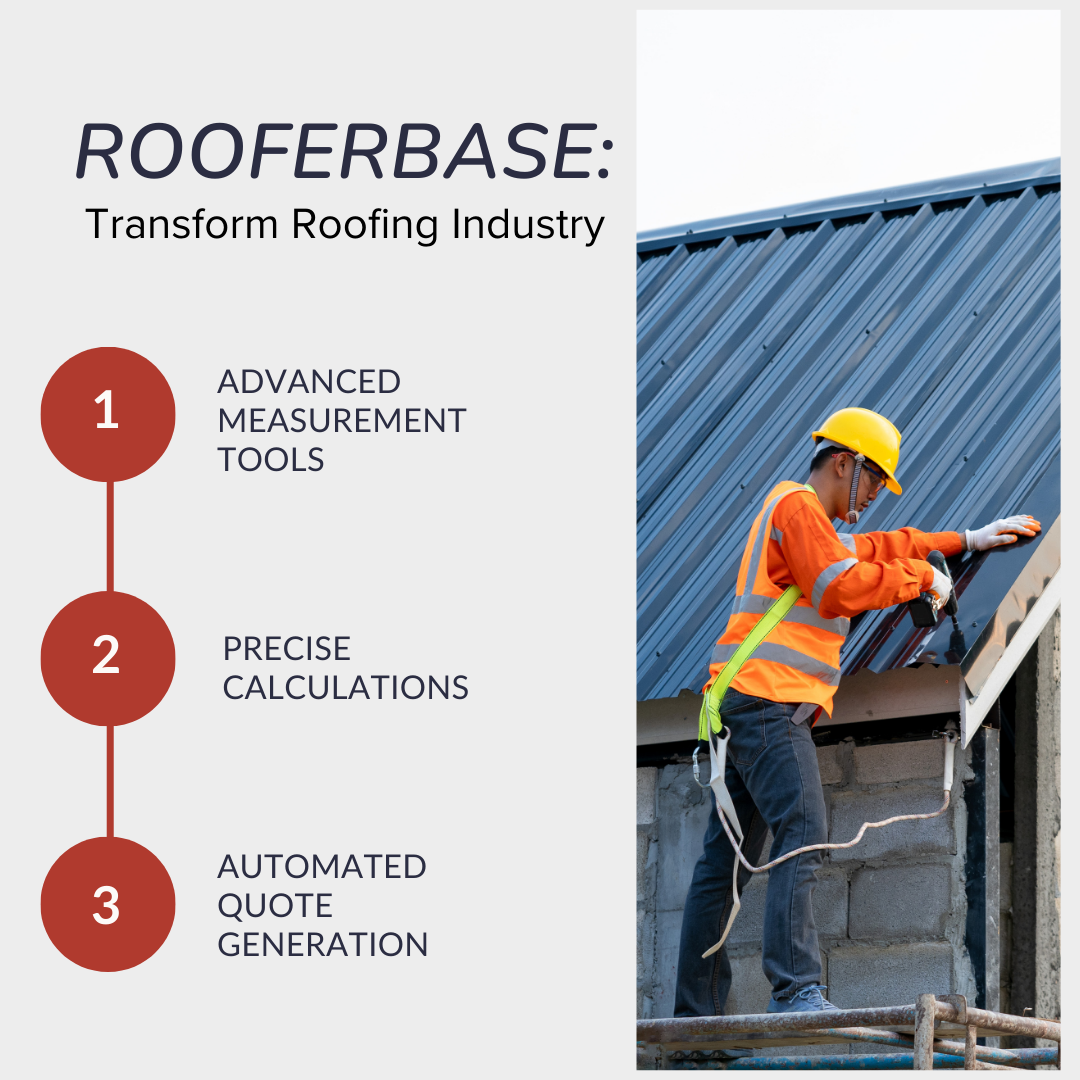
Rooferbase leverages advanced technology and offers cutting-edge features that address the evolving needs of the roofing industry. Here are the reasons why it is poised to be the future of roofing estimation:
- Advanced Measurement Tools: Rooferbase enables remote roof measurement and provides accurate dimensions. It uses high-resolution aerial images captured by AI-powered measurement tools to enhance the efficiency of roofing estimation.
- Precise Calculations: The software automatically calculates material costs, labor costs, and timelines, reducing human errors and speeding up the process. Real-time pricing reflects the current market rates, eliminating the need for manual updates.
- Automated Quote Generation: Alongside automatic calculations, the software enables the professional presentation of quotes, maintaining branding elements. Its integration with other tools and features, such as e-signature, facilitates seamless and faster closure of roofing deals.
In a Nutshell
Handling roofing projects has become easier with digital roofing solutions, which are now a necessity.
People are increasingly leaning toward sustainable solutions that promote energy efficiency, including smart roof technology, green roofs, cool roofs, and more.
These advancements have added complexity to roofing operations, particularly estimation. Therefore, roofing companies need a comprehensive tool like Rooferbase to adapt to these changes and stay competitive in the market.
Know More About Rooferbase
Simplify and streamline your roofing estimation with Rooferbase. Let’s build exceptional roofs together! Contact us today for more details.
Frequently Asked Questions (FAQs)
Q1. What are instant roofs?
Instant roofs are pre-fabricated or modular roofing solutions designed for quick installation. They are manufactured off-site and can be quickly assembled on-site.
Q2. How do solar shingles differ from solar panels?
Solar panels can be installed on either roofs or the ground, whereas solar shingles are an innovative photovoltaic roofing solution that also generates electricity.
Q2. What are impact-resistant shingles?
Impact-resistant shingles are designed to withstand harsh weather conditions. They are cost-effective, offer enhanced durability, and have a longer lifespan compared to other roofing materials.

